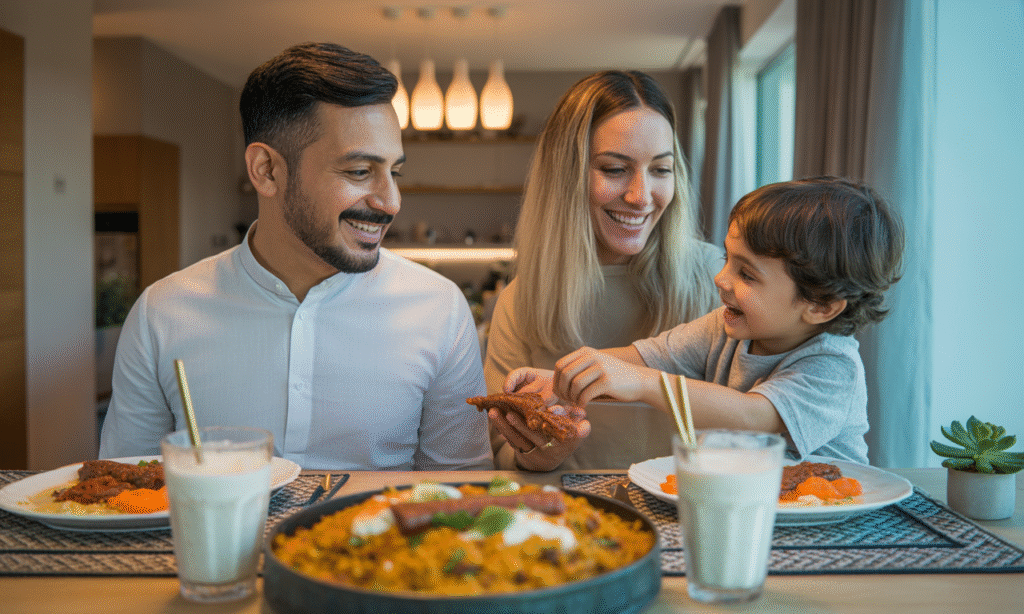Navigating Food Differences in Marriage: Turning Culinary Clashes into Deeper Connection
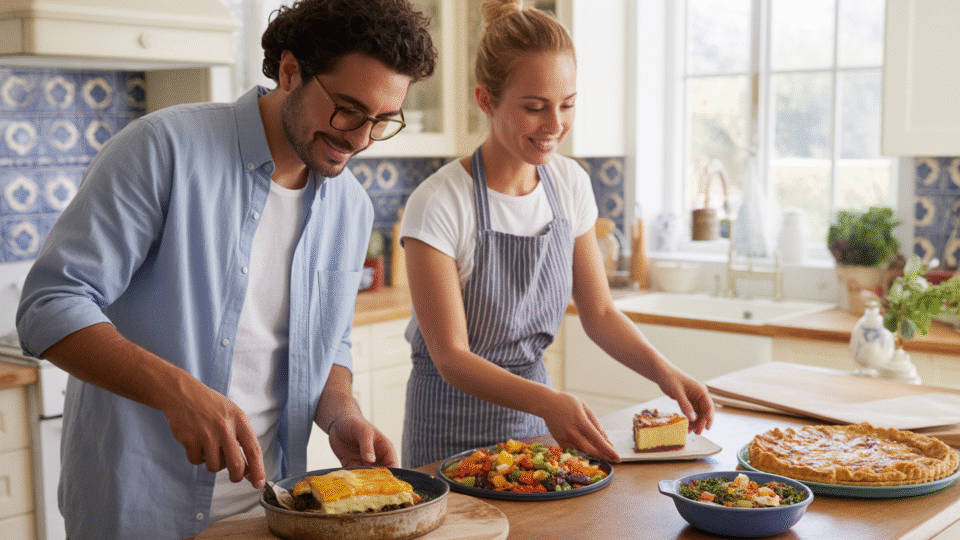
Food isn’t just fuel.
It’s culture.
It’s memory.
It’s emotion.
It’s identity.
In cross-cultural marriages, the kitchen can become one of the most unexpected battlegrounds—or, when approached with love and curiosity, one of the richest sources of connection. When two people from different backgrounds come together, it’s not uncommon for what’s on the plate to become a source of tension. Maybe one spouse can’t imagine a meal without rice, while the other grew up on bread. Maybe one grew up with spicy food and the other can’t handle even mild heat.
Even deeper, food brings up nostalgia. It reminds people of their childhoods, their families, their homes. So when a spouse criticizes or avoids a dish, it can feel like a rejection—not just of the meal, but of their roots.
But here’s the beautiful truth: culinary differences don’t have to divide you. In fact, they can become a joyful, adventurous, deeply bonding part of your marriage.
Let’s explore how to turn food tension into food connection—and make your kitchen one of the most meaningful rooms in your relationship.
1. Food Is Emotional—And That’s Okay
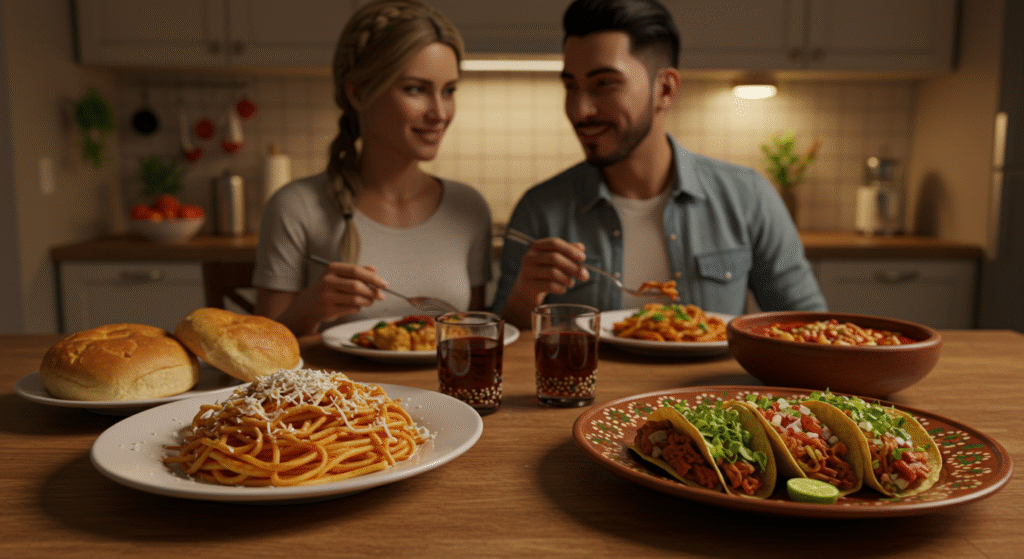 The first step to navigating food differences in marriage is acknowledging just how emotional food can be.
The first step to navigating food differences in marriage is acknowledging just how emotional food can be.
Food is often the first love language we learn. It’s how our parents nurtured us, how we celebrate holidays, how we feel comforted when we’re sick or sad. In many cultures, feeding someone is an act of love and respect.
So when one spouse doesn’t like—or even refuses to try—a culturally important dish, it can sting. Comments like:
- “That smells weird.”
- “I don’t eat that kind of meat.”
- “This texture is gross.”
…may seem harmless on the surface, but can trigger feelings of rejection, embarrassment, or shame.
Tip: Before reacting to your spouse’s food, take a moment to ask yourself: What might this dish mean to them?
2. Get Curious, Not Critical
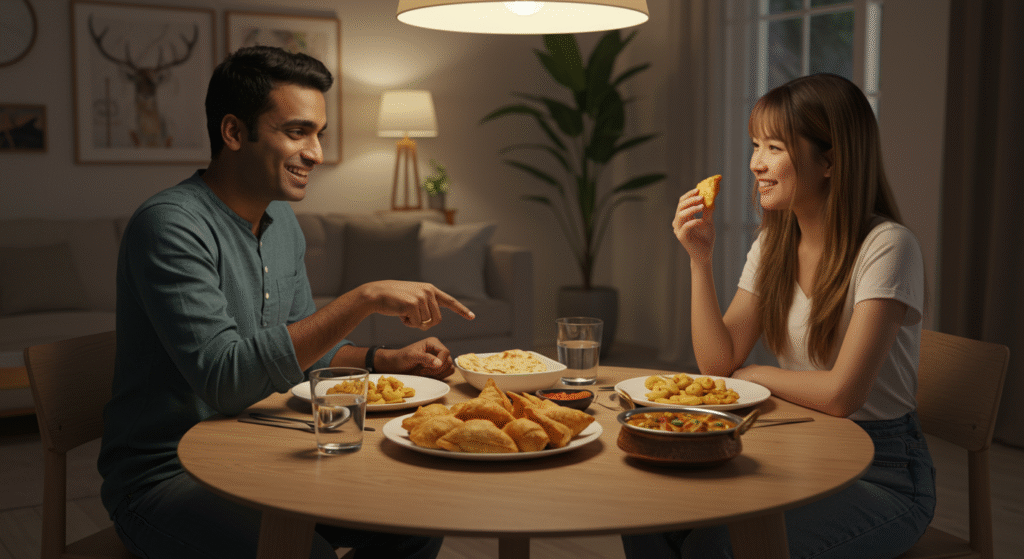 Instead of making snap judgments, try asking open-ended, curious questions:
Instead of making snap judgments, try asking open-ended, curious questions:
- “Tell me the story behind this dish.”
- “Is this something your family made on special occasions?”
- “What do you love most about this meal?”
When you approach your partner’s food culture with curiosity rather than criticism, it shows that you respect where they come from—even if the meal itself isn’t your favorite. You might be surprised how quickly this turns an awkward moment into a beautiful conversation.
You don’t have to love every bite to love the person who made it.
3. Try a “New Dish Night” Tradition
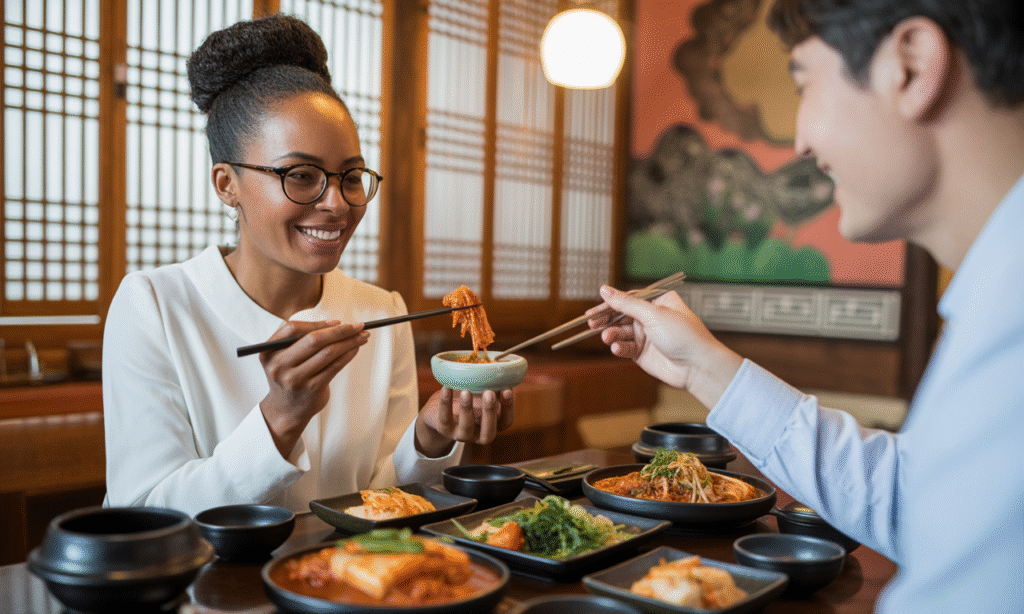 One of the best ways to bridge culinary gaps is to make trying new foods a shared tradition.
One of the best ways to bridge culinary gaps is to make trying new foods a shared tradition.
Consider setting aside one night a week (or month) to try a dish from each other’s culture—or from a completely new one. Make it a fun, judgment-free experiment. Let both of you take turns choosing what to cook or order.
Some couples even document their food adventures together: taking photos, rating dishes, or journaling their reactions. This turns food exploration into a bonding ritual, not a battleground.
Remember: The goal isn’t perfection. It’s presence. It’s partnership.
4. Know That Food Preferences Aren’t Personal Attacks
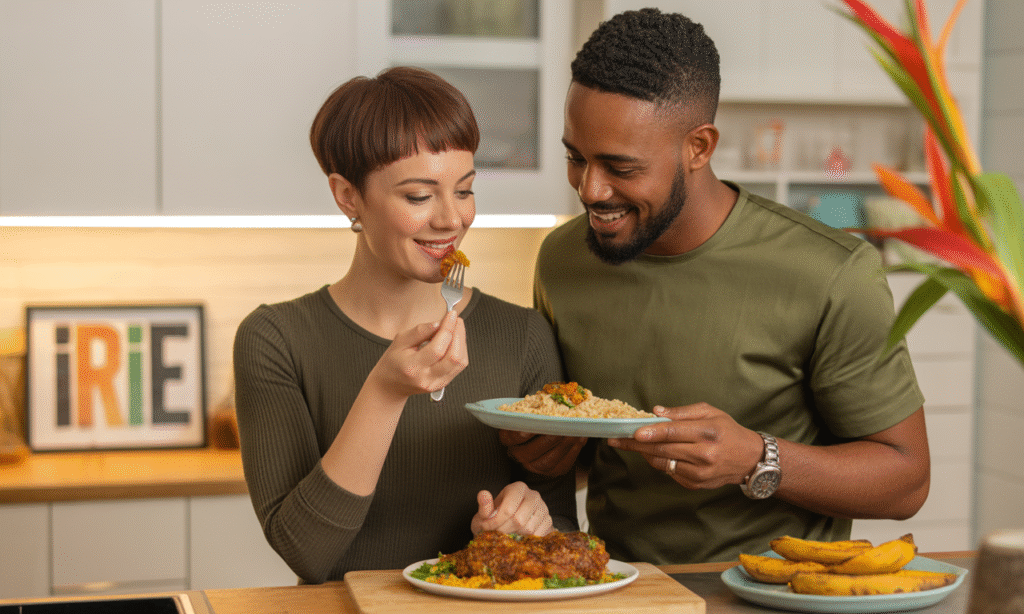 When your spouse says, “I don’t like this,” it can be hard not to take it personally—especially if it’s a beloved family recipe. But it’s important to remember:
When your spouse says, “I don’t like this,” it can be hard not to take it personally—especially if it’s a beloved family recipe. But it’s important to remember:
Taste is not a reflection of love.
Your spouse might simply not be used to that spice level, ingredient, or texture. In many cases, what we crave or reject is based on what we’re familiar with. Over time, tastes can change—but forcing or guilt-tripping your spouse into liking something rarely works.
Instead, try phrases like:
- “It’s okay if you don’t love it—thank you for trying it.”
- “What part did you like? What would you want to change next time?”
- “Let’s experiment with a different version of this dish next week.”
This keeps the door open for culinary growth without causing emotional damage.
5. Cook Together—Even If You’re Not a Chef
 Cooking together can become a sacred ritual. It doesn’t matter if neither of you is a culinary expert. The act of planning, shopping, prepping, and plating a meal together creates shared effort and shared memories.
Cooking together can become a sacred ritual. It doesn’t matter if neither of you is a culinary expert. The act of planning, shopping, prepping, and plating a meal together creates shared effort and shared memories.
When you step into your partner’s kitchen world—helping with spices, learning traditional techniques, or just washing dishes while they cook—you’re not just making food.
You’re making connection.
6. Respect Mealtime Traditions and Rituals
It’s not just what you eat—it’s how you eat.
In many cultures, mealtime is a ritual. For some, it’s a quiet, slow, sit-down family affair. For others, it’s lively and communal. Some cultures pray before meals. Others eat with hands instead of utensils.
When cultures clash, it’s easy to feel like the other person’s habits are “weird” or “wrong.” But marriage invites us to create a new shared culture, one that honors both traditions while building something fresh.
Have a conversation about your food habits:
- What did meals look like in your childhood home?
- What do you value about those traditions?
- What would you like to carry into our family culture?
7. Plan Ahead for Holidays and Special Occasions
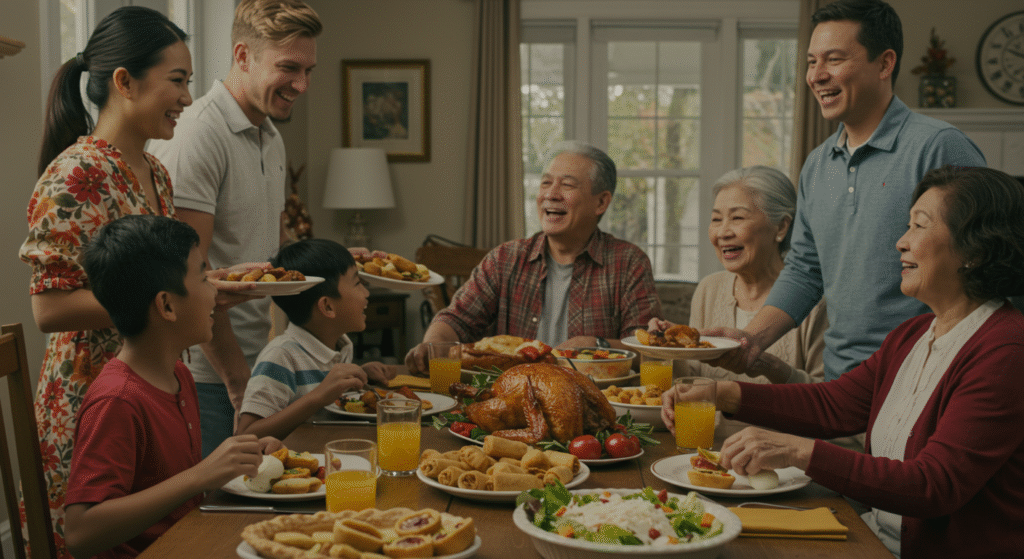 Holidays can be a landmine when it comes to food. One spouse may expect turkey and stuffing; the other expects curry and rice. One may fast; the other may feast.
Holidays can be a landmine when it comes to food. One spouse may expect turkey and stuffing; the other expects curry and rice. One may fast; the other may feast.
To avoid conflict, talk about food expectations before holidays arrive. Ask questions like:
- “What dishes make the holiday feel special for you?”
- “How can we include both of our traditions?”
- “Is there anything I need to avoid out of respect for your beliefs?”
Blending traditions may take creativity, but it’s worth the effort. You can even host a fusion feast, where both cultures are honored side by side.
8. Build Your Own Food Identity as a Couple
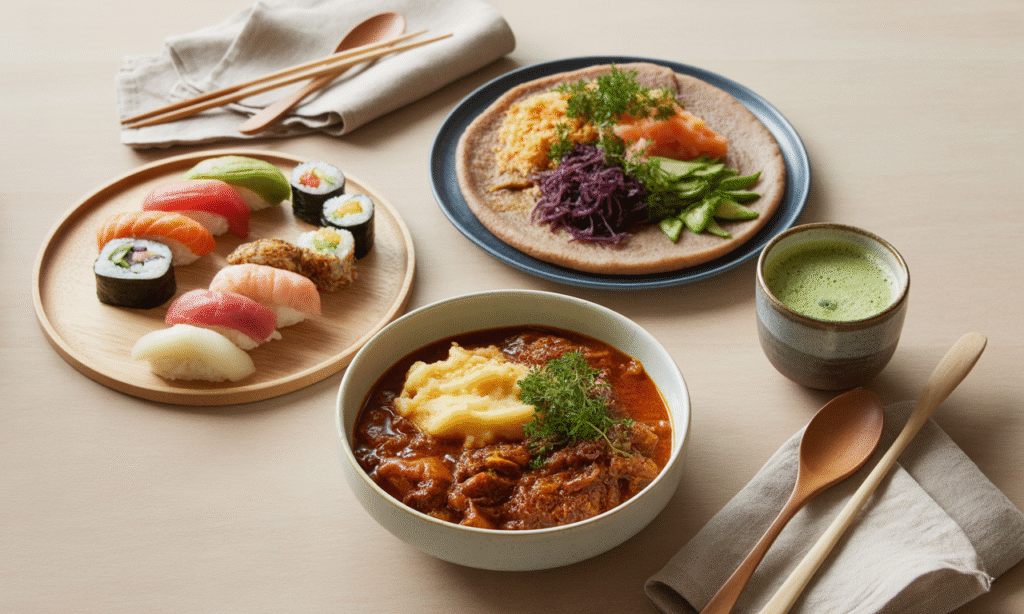 Over time, many cross-cultural couples begin to develop their own marriage food identity—a blend of dishes, habits, and flavors that represent their shared life.
Over time, many cross-cultural couples begin to develop their own marriage food identity—a blend of dishes, habits, and flavors that represent their shared life.
Maybe it’s taco night with homemade chapati. Or sushi with sweet tea. Or Ethiopian stew served with mashed potatoes. It doesn’t have to make sense to anyone else—as long as it brings you joy.
Create your own “greatest hits” list of meals you both enjoy. Keep experimenting. Keep learning. Keep tasting life together.
Food doesn’t have to divide you. It can define you—as a team.
Final Thoughts: The Kitchen as a Place of Unity
 At first glance, food differences may seem like just another quirk of cross-cultural marriage. But beneath the surface lies something more powerful: a daily opportunity to show love, respect, curiosity, and creativity.
At first glance, food differences may seem like just another quirk of cross-cultural marriage. But beneath the surface lies something more powerful: a daily opportunity to show love, respect, curiosity, and creativity.
When you cook for your partner—even if it’s not perfect—you’re showing love. When you try their family recipe, you’re honoring their history. When you take time to talk about food without judgment, you’re building trust.
In marriage, the table is never just about food.
It’s about being seen, being safe, and being home—together.
💬 Couples Conversation Starters:
- What’s one dish that always reminds you of your childhood?
- Is there a food you wish I would try again?
- What’s a new recipe we could cook together this month?

